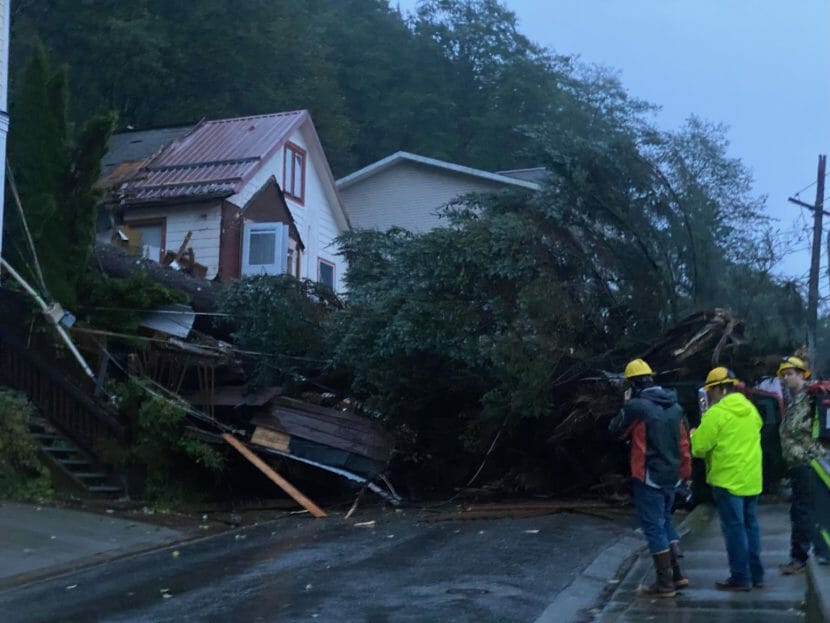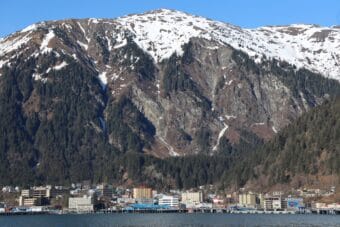
Juneau’s planning commission has recommended that the Assembly nix a proposed ordinance to regulate property development in areas of downtown Juneau that are prone to avalanches or landslides.
Residents who testified at Tuesday night’s meeting overwhelmingly opposed the policy, saying it could create new financial burdens for homeowners.
“Does it make me a little sleepless at night that there’s a possibility that there could be an avalanche or landslide? Of course,” said Deputy Planning Chair Mandy Cole. “But I don’t know that I have enough to outweigh all of those concerns on the other side.”
Nearly half the properties in downtown Juneau are vulnerable to avalanche or landslide disasters. Policymakers have wrestled with the problem for decades, but the city hasn’t updated land use code for those hazard zones since the 1980s.
The proposed ordinance was written to update the code using hazard maps from 2021, which were made with more advanced technology.
The ordinance doesn’t prohibit new property development, but it does make it harder. Property owners in moderate or severe avalanche zones could build new single family homes. But additions, like an in-law apartment, or bigger buildings, like an apartment building, would not be allowed.
In severe landslide zones, all new development, including single family homes, would be prohibited. That distinction was made because avalanches are generally considered more predictable.
But the ordinance has ways to get around those prohibitions. Property owners could appeal to the city to alter the map’s boundaries or get a special permit.
Those channels were designed to create some middle ground between all-out prohibition and a complete lack of regulation. But residents like Mary Alice McKeen questioned whether they would be realistic. Appeals would require outside consultation with a civil engineer, which can be costly.
“The city is taking the burden, the financial burden, of providing site-specific analysis and putting it on the property owner,” she said.
Other commenters were afraid that adoption of the new ordinance could make lending institutions more hesitant to refinance or dole out loans.
“My Westridge condo is my home, my retirement and my life investment. Adopting the map will price me out of my home, and possibly Juneau,” said Mary Ellen Duffy.
Much of the discussion centered around what commenters perceived as the map’s limitations. They lay out hazards by neighborhood rather than individual property. Many felt that the risk to their own homes did not match what the maps showed for their neighborhoods.
Only one resident showed up to support the ordinance and the maps. Albert Shaw made loss of life his central argument. He recalled the 1936 mudslide that killed 15 people on South Franklin Street.
“I’m one of the last people standing who saw the mud against the cold storage in 1936,” Shaw said. “It killed people.”
Shaw said he made his own failed attempt at policymaking as a member of the city council after the 1962 avalanche in the Behrends neighborhood. He urged the commission to take the hazard more seriously.
“Just because nothing’s happened in 60 years doesn’t mean something won’t happen soon,” he said.
Ultimately, the commission felt that concerns from the ordinance’s opponents outweighed its potential benefit for public safety.
“We have talked about safety, risk, hazard housing, crisis, individual hardship, mitigation strategies. What’s available? What’s affordable?” Cole said. “There’s no map that adequately answers the safety question for me at the expense of all of those other concerns.”
The discussion largely bypassed new language in the ordinance that would require a written disclosure of hazard for would-be buyers or renters. The commission may recommend hazard disclosure to the Assembly as a separate consideration.
The Assembly will have the final say on the proposed policy. They will consider the planning commission’s recommendation at a future meeting.
Correction: A previous version of this story did not specify that the proposed ordinance would not apply to all hazard zones. It targets moderate and severe avalanche zones and severe landslide zones.



